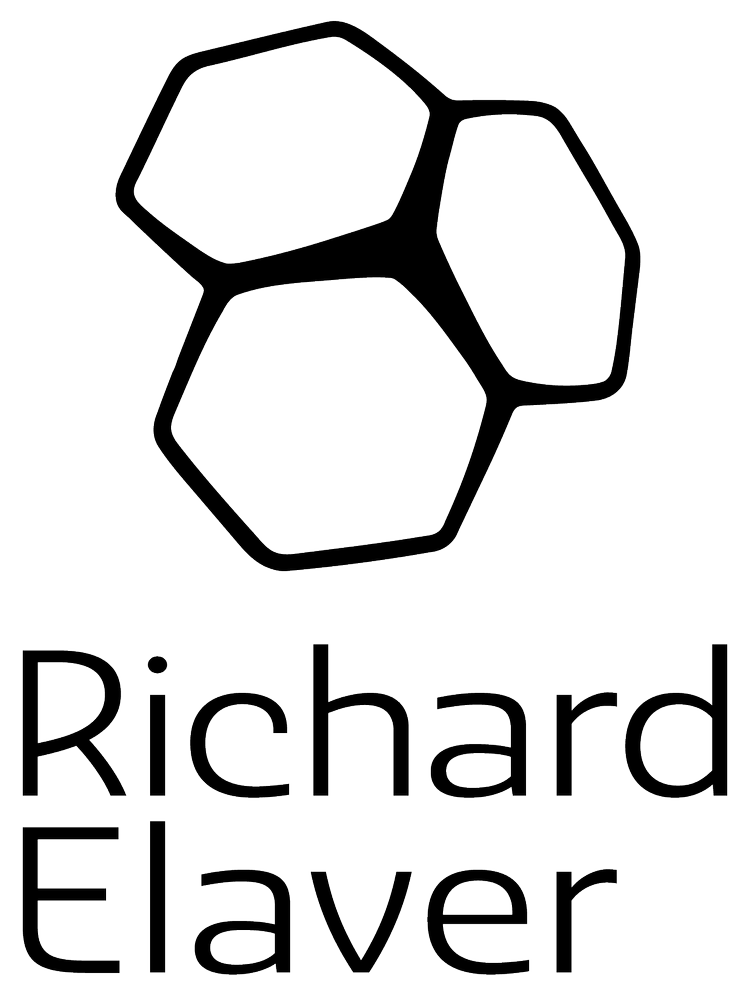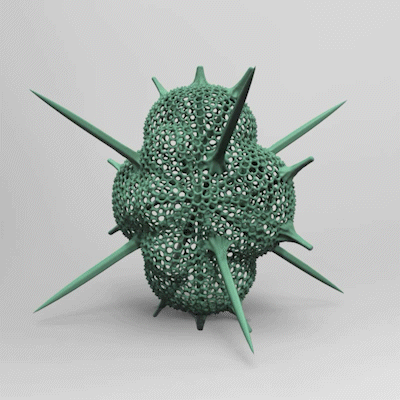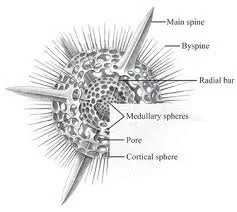Radiolaria Jewelry
Radiolaria 1 - nassallaria
Initial model was based on electron microscope images of nassellaria skeletons. Later iterations used the patterns and forms to create earrings and a pendant design. The earrings have an 12mm rose quartz sphere and sterling silver ear wires.
More about radiolaria project
Radiolaria are amazing microorganisms, unicellular protists, many of which leave behind beautiful skeletal structures which are often used to date fossil records. I have been looking at them for decades, inspired by Ernst Haeckel’s drawings, and referencing them in my work. For this series, I decided to go to the source and make models of specific biological forms, and then create jewelry based on those specific anatomical structures.
Some are based on electron microscopy images, others reference Ernst Haeckel’s 19th century drawings and writing.
This opened up many challenges in CAD software to not just reference the morphology, but to try to replicate it. This required the use of multiple software packages, including Rhino3D, Grasshopper3D, Zbrush, and MeshMixer - in order to make these biological forms manufacturable. I then took what I learned from that process, and simplified/modified the models to create jewelry pieces from them.
The pieces are displayed as an ‘evolution’ of a decorative species, starting from the biological model, moving through a few iterations, ending with a finished piece of jewelry. This mimics a display in a natural history museum, intending to show the evolutionary process of design development…
Radiolaria are amazing microorganisms, unicellular protists, many of which leave behind beautiful skeletal structures which are often used to date fossil records. I have been looking at them for decades, inspired by Ernst Haeckel’s drawings, and referencing them in my work. For this series, I decided to go to the source and make models of specific biological forms, and then create jewelry based on those specific anatomical structures.
Some are based on electron microscopy images, others reference Ernst Haeckel’s 19th century drawings and writing.
This opened up many challenges in CAD software to not just reference the morphology, but to try to replicate it. This required the use of multiple software packages, including Rhino3D, Grasshopper3D, Zbrush, and MeshMixer - in order to make these biological forms manufacturable. I then took what I learned from that process, and simplified/modified the models to create jewelry pieces from them.
The pieces are displayed as an ‘evolution’ of a decorative species, starting from the biological model, moving through a few iterations, ending with a finished piece of jewelry. This mimics a display in a natural history museum, intending to show the evolutionary process of design development…
Radiolaria 2 - acantharia
Based on a text from Ernst Haeckel, with a detailed written description of an Acantharia subspecies, in a chapter titled ‘Radiotics- the science of radial structures’. The panelized sphere was then simplified into an open wireframe for jewelry designs.
(Current work-in-progress)
Radiolaria 3 - Paracanthea
Based on a sketch by Ernst Haeckel, this biological model was created using Rhino and Zbrush software. A section of this complex form was then simplified to create a brooch design.
(Current work-in-progress)
Radiolaria 4 - Spumellaria
Spumellaria is an order of radiolarians, many with spherical, multi-layered skeletal structures.
(Current work-in-progress)
























